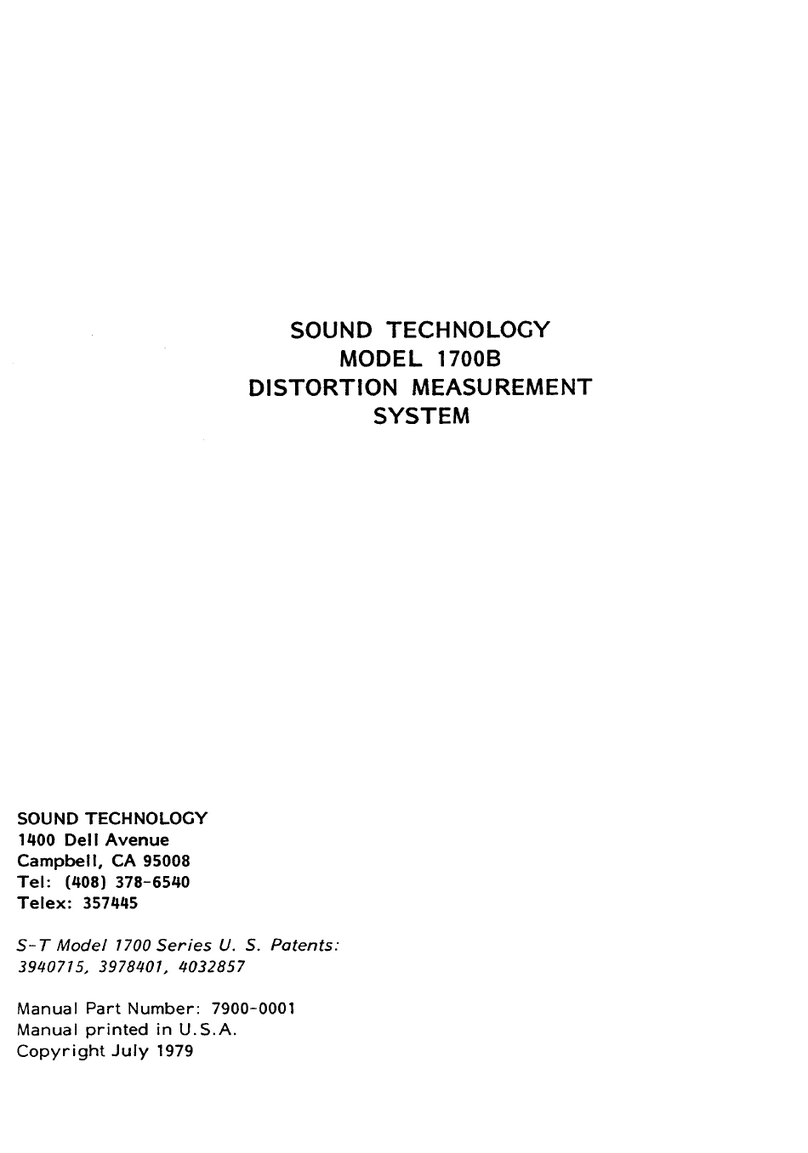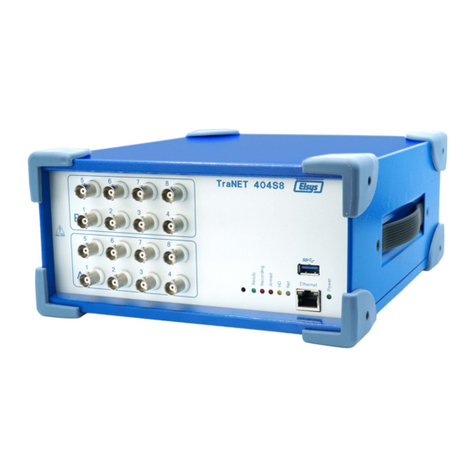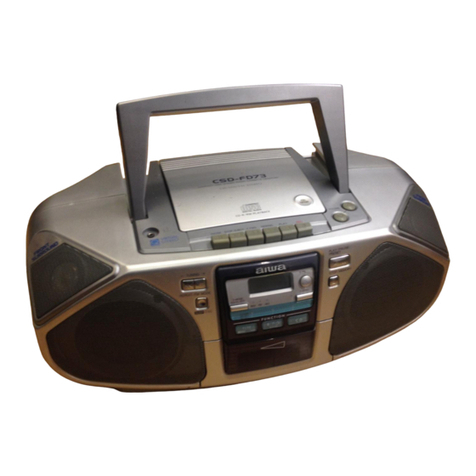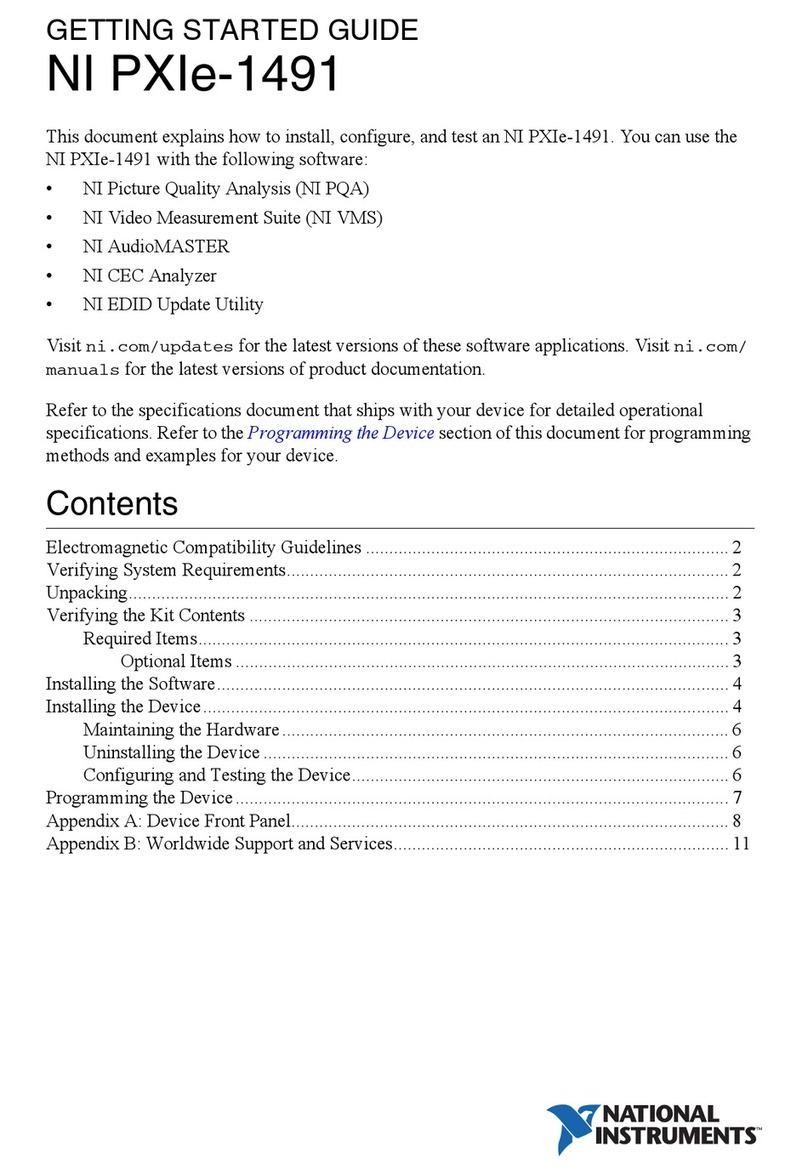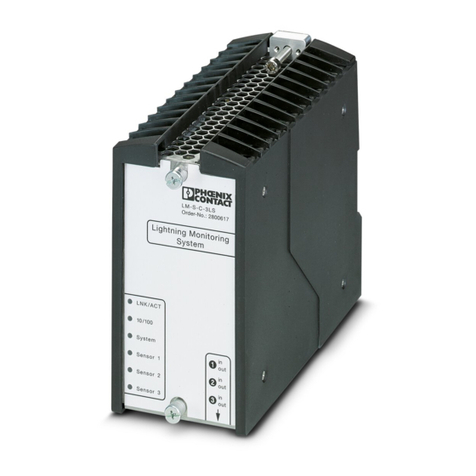Sound Technology 1710A Operating manual

www.SteamPoweredRadio.Com
AfTE
-NTION
PLEASE
SAVE
THIS SHIPPING
CARTON AND ALL
PACKING
MATE-
RIALS.
THEY
HAVE
BEEN SPECIFI-
CALLY DESIGNED
TO
PROTECT
YOUR SOUND TECHNOLOGY
INSTRUMENT.
IF,
AT
ANY TIME,
YOU
HAVE
REASON
TO
TRANSPORT
YOUR
EQUIPMENT, USING THIS CARTON
WILL HELP PREVENT DAMAGE.
NEW CARTONS AND
PACKING
MATERIALS
ARE
AVAi
LAB
LE
AT
A
NOMINAL CHARGE FROM SOUND
TECHNOLOGY.

www.SteamPoweredRadio.Com
s
SOUND
TECHNOLOGY
1400
DELL
AVENUE
CAMPBELL.
CALIFORNIA
95008
Telephone:
(408)
378-6540
Telex
:
357445
-I
1700
SERIES
METER
ZERO
ADJUSTMENT
The
meter
is
correctly
zeroed
w~~n
the
pointer
rests
directly
over
the
zero
calibration
mark
on
the
meter
scale.
IMPORTANT:
if
the
meter
is
not
proper(j,.i
.
iiroed,
calibration
accuracy
will
be
affected.
To
set
met
er
ZJ!Wt:
,~
~
, ·
a.
Turn
on
unit.
~
,~t
~)
B,RPT
swi-tch:
to
: 300
VOLTS
(lOOv
for
1710A) and
FUNCrION
.~
S.,W..iich
to
VOttS/POWER.
(Make
sure
Analyzer
Select
bu~~~
is
out
for
1710A).
b.
BALANCED
INPUT
terminals
should
be
shorted
together
and
grounded
to
chassis
ground.
c.
Rotate
meter
zero
adjustment
screw
(located
just
below
meter
on
front
panel)
until
p9inter
moves
up
scale
when
turned
cw
and
down
scale
when
turned
ccw. Turn screw
cw
or
ccw
until
pointer
rests
directly
over
the
zero
calibration
mark,
then
back
off
screw
a
very
slight
amount
in
the
opposite
direction
to
relieve
tension
on
the
pointer
while
maintaining
·
the
zero
calibration.
Repeat
adjustment
if
necessar
y.
If
you have any
questions,
p1ease
c~ntact
Sound Technology
Customer
Service
at
(408)
378-6540.

www.SteamPoweredRadio.Com
•
•
SOUND
TECHNOLOGY
1400 Dell
Avenue
Campbell,
CA 95008
Tel
: (408) 378-6540
Telex
: 357445
5-
T 1700 Series U.S. Patents:
3940715, 3
9781101,
4032857
.
a
nual
Part
Numb
er:
7900
-00
11
•
Manual
printed
in U. S.A .
Copyright
Marc:h 1979
Pr
ice
: $
20
.
00
SOUND
TECHNOLOGY
MODEL 1710A
DISTORTION
MEAS~REMENT
SYSTEM

www.SteamPoweredRadio.Com
,
..
',
WARRANTY
All
new
Sound
Technology
products
are
warranted
aga
i
ns
t
defects
in
materi
als
and
workmanship
for two
year~
from
the
date
of
delivery
.
Any
instrument
or
component
that
is
found to
be
defective
within
the
warranty
period
after
exami-
nation
by
Sound
Technology
or
'.
an
,
author
i
zed
representative
thereof
will
be
repaired
or
replaced
without
c~arge for
labor
or
material.
No
o
ther
warranty
is
e,cpressed
or
implied.
We
are
not
liable
for
consequential
damages
.
Before
returning
a
product
.to S9Und
Technology
for
service
,
authorization
must
be
obtained
from
the
factory
.
For
products
not
covered
by
the
warr
a
nty
.
a
purchase
order
should
be
forwarded
to
avoid
unnecessary
delay
.
Please
include
instrument
model
number
and
serial
number
with
all
requests
for
parts
or
service
to
facilitate
the
fastest
poss
i
ble
response
.
All
products
returned
to
the
fact9"y
must
be
shipped
prepaid
.
For
produ
c
ts
under
warranty
,
Sound
Technology
will
pay
for
shipment
back
to
the
customer
.
•
•
•

www.SteamPoweredRadio.Com
•
•
•
SECTION
I
1-
1.
1-2.
1-3.
1-4.
1-5.
1-11.
1-12.
1-B.
1-14.
1-17.
SECTION
II
2-l.
2-2.
2-16.
2-22.
TABLE
OF
CONTENTS
-
OPERATION
. . . . . . . .
SCOPE
OF
SECTION
...
.
INTRODUCTION
.....
.
INPUT
POWER
REQUIREMENTS
POWER
CABLE
. . . . . . .
CONTROLS
AND
INDICATORS.
1-6.
AC
Input
...
..
. '
1-7. Sine
Wave
Generator
.......
.
..
.
1-8. Total Hanronic Distortion
(THO)
Analyzer.
1-9.
Auto
Set
Level
. . . .
.........
.
1-10. Intenoodulation Distortion
(IMO)
Analyzer
TEST
SETUP
....
POWER
CONr~ECTIONS
.
r,ROUND
CONNECTIONS.
SIGNAL
CONNECTIONS.
1-15. Generator.
1-16. Analyzer.
OPERATING
PROCEDURES
..
1-18. Test Connections
..
.
.....
.
1-19.
Meter
Mechanical
Zero
Adjustment.
1-20. Frequency Adjustment
..
.
..
. .
1-21.
Impedance/Load
Configuration
..
.
1-22.
Level
Adjustment
....
. .
..
.
1-23. Distortion
Measurement
.......
..
.
..
.
1-24. Distortion
Measurement
with External
Oscillator
.
1-25.
AC
Signal
Level
Measurement.
1-26.
Level
Ratio
Measurements
-
PRINCIPLES
OF
OPERATION
..
INTRODUCTION
.. ..
....
..
DISTORTION
ANALYZER
.
...
.
2-3. General Description.
2-4. Buffer Amplifier
..
2-5. Overload Detector
..
2-6.
Notch
Fi
1
ter
. . . . . . . ·. . . . .
2-7. Distortion Amplifier
and
Attenuator.
2-8. Amplitude
Null
Control
2-9.
Phase
Null
Control
2-10.
Sum
Point Buffer
..
2-
11
:
Tuning
Indicator
..
2-12.
Filters
.
..
..
. .
2-13.
Fun
ctio
n Switches
..
2-14. Meter
Preamplifier.
2-15.
AC
Meter
.....
.
GENERATOR
...
.
.....
.
2-17. r.eneral Description.
2-18.
Oscillator
Circuit
2-19. Amplitude
Cont
rol
..
2-20. Attenuator
....
.
2-21.
Balanced
Amplifier.
POWEP.
SUPPLIES.
. . . . . . .
2-23. General Description.
2-24. Input
Circuit.
2-25.
+15
Vdc
Supply . . .
2-26 -15
Vdc
Supply
..
.
2-27.
+17
Vdc
Supply
..
.
2-28. -17
Vdc
Supply
...
.
2-29. Floating
Ground
Supply
..........
.
2-30. Electromagnetic Interference Consideratio
ns
.
PAGE
.r-r
.1-1
.1-1
.1-1
.1-1
.1-1
.1-2
.1.2
.1-2
.1-3
.1-3
.1-3
.1-5
.1-5
.1-5
.1-5
.1-6
.1-6
.1-6
.1-7
.1-7
.1-7
.1-7
. .1-8
. ·.1-8
.1-9
.1-10
.
2-1
.2-1
.2-1
.2-1
.2-2
.2-2
.2-2
.2-2
.2-2
.2-3
.2-3
.2-3
.2-4
.2-4
.2-4
.2-4
.2-4
.2-4
.2-4
.2-5
.2-7
.2-8
.2-8
.2-8
.2-8
.2
-8
.2-8
.2-8
.2-9
.2-9
.2-9
..

www.SteamPoweredRadio.Com
TABLE
OF
CONTENTS
continued
SECTION
III
- .
MAINTENANC
E
3-1.
3-2.
3-3.
3-4.
3-5.
3-6.
3-21.
3
-3
7.
3-
38.
3-
39.
3-40.
3-41.
3-45.
3-46.
SECTIO
N
IV
-
4-1.
4-2.
4-3.
SECTIO
NV -
5-1.
5-2.
I:HRODUCTIOfL
PART
l -
BASIC
SYST
EM
OPERATION.
PERFORMANCE
CHECK.
TROUBL
E
SHOOTING
.
SYMPTOM/CAUSE
TAB
LE
PAR
T 2 -
CO
MPLE
TE
SYSTEM
CHECK
TEST
EQ
UIPMENT.
INTRODUCTION.
3-7. Circuit
Co111110n
Isolation
Chec
k
3-8.
Frequency
and
Level
Check.
3-9. Distortion T
est.
3-10.
Ba
lance
Ch
eck.
3-11. Vernier
Level
Control
Range
Check.
3-
12.
1
and
0.1 dB-Per-Step
Level
Co
ntrols
3-13.
+26
and
+20
dBm
Level
Checks
3-14.
10
dB-P
er-
Step
Level
Co
ntrol,
Ba
la
nc
ed
Loads
3-15.
10
dB
-Per-Step
Level
Co
ntrol ,
Unbala
nced
Loads
3-16.
dB
Volts Test. - .
3-17. Volts P
ower
Test .
3-18.
Filters
Test .
3-
19.
Re
si
dual
Noise
Test.
3-20.
Co111110
n
Mode
Rejection Test
PA
RT
3 -
ADJUSTMENT
and
C
ALIBRATI
ON
PROCEDURE.
INTRODUCTION.
. .
3-22
. -
17
Volt Adjustment. . ,
3-23.
+17
Volt Adjustment. .
3-
24.
Oscillator Photocell
Ad
just
ment
.
3-
25.
Oscillator
Integrator
Vo
ltage
Chang
e Adjustm
ent
.
3-26. Oscil1a·
tor
Integrator
Outp
ut
Adjustment. ,
3-27
.
Oscillator
xlOO
O
Frequency
Ra
n
ge
Adjustment.
3-
28
. Amplifier Balance.
3-
29
.
Ver
n
ie
r Attenuator
Range
3-30.
+15
Vo
lt
Adj
ustm
ent.
3-
31.
-15
Volt Adjustment.
3-32.
DC
Zero
Adjustment.
3-33
.
Null
Adjustment. •
3-34.
Phas
e
Null
Inte
grator
Voltage Adjustment
3-35
.
Tuning
In
dic
ator
.
3-36. Calibration
at
1
kHz
.
CO
MPONENT
REPLACEMENT-CALIBRATION
ANO
ADJUSTMENT.
PART
4 -
REPLACEMENT
and
REPAIR
.
S
PECIAL
PRECAUTIONS
.
WI
RING.
SO
L
DERING
TECHNIQUES.
COMPO
NENT
REP
LACEMENT
.
3-42.
Mult
i
-Lead
Devices
3-43. Potentiometers
3-44. Analyzer
Power
Supply
.
OSCILLATOR
ACCESS
.
FREQUENCY
MODULE
REPAIR
.
3-47. Repair
and
Replac
ement
3-48. Re
pair
Instructio
ns
.
DIAGRAMS
I
NTROOUCT
ION.
SCHEMAT
IC
DIAGRAMS.
CO
MP
ONEN
T
LOCATION
DIAGRAMS
SPAR
E
PARTS
INTRODUCTION.
ORDERING
INFORMATION.
3-1
3-1
3-1
3-
2
3-3
3-3
3-3
3-3
3-3
3-3
3-8
3-8
3
-9
3-9
3-
10
3-
10
3-
11
3-
11
3-
12
3-
12
3-
13
3-
13
3-14
3-14
3-14
3-14
3-
14
3-
15
3-15
3-
15
3-15
3-16
3-17
3-17
3-17
3-
17
3-
18
3-
18
3-19
3-
19
3-
20
3-2
0
3-
20
3-2
0
3-21
3-
21
3-
21
3-
21
3-
21
3-
22
3-
22
3-23
4-1
4- l
4-1
5-
1
5- 1
•
•
•

www.SteamPoweredRadio.Com
•
•
•
1-1.
SCOPE
OF
SECTION
SECTION
1
OPERATION
This section contains information
and
instructions
necessary for the operation
of
the
Sound
Technology
Model
1710A
Distortion
Measurement
System. Included are
power
requirements,
cabling information
and
operating
instructions.
1-2.
I~TROOUCTION
The
Model
1710A
Distortion
Measurement
System
co111>1nes
a
flexible
ultra-low-distortion
sine-
wave
signal generator, a high-resolution automatic-measuring
total
harmonic
distortion
(THO)
analyzer,
and
an
accurate ac-level meter
in
one instrument. Pushbutton operation
permits the operator
to
quickly measure voltage
or
power
levels,
set
level,
and
then
measure
distortion.
The
generator section provides a pure sine-wave
oscillator
signal
for
testing
from
10
Hz
to
110
kHz.
The
generator output
is
direct
-coupled
(no
transformer)
and
is
balanced
and
floating
with respect
to
ground.
Either
side
can
be
grounded without
any
level change.
The
output
impedance
can
be
set
to
either
150
ohms
or
600
ohms
(except
for
levels
greater
than
+21
dBm),
and
discrete
calibrated
levels in 0.1
dB
steps
can
be
selected
from
+27.0
dBm
to
-90.9 dBm(decibcls
relative
to
1
milliwatt
into
600
ohms)
into
150-ohm
or
60Q-ohm
loads (17.32 V
rms
maximum).
The
level across
any
load used can,
in
addition,
be
directly
measured within the instrument.
An
indicating
off
switch disables the generator for
convenient
signal-to-noise
ratio
(SNR)
measurements.
The
analyzer section contains a tracking notch
filter
which
is
always tuned
to
the
generator's
frequency.
The
analyzer measures
total
harmonic
distortion
with a
sensitivity
ranging
from
100
percent
to
.01 percent
full
scale
, with automatic nulling
on
all
ranges.
Active
filters
may
be
selected
for
hum
and
noise suppression, enhanci ng the
measur
e
ment
resolution. A
differential
front
end
rejects
c011100n
-
mode
noise.
The
ac
signal-level
meter in the analyzer measures
ac
voltage,
or
power
in
dBm.
The
measurement
range
for
ac
voltage
is
0.1
millivolts
to
100
volts
full
scale
(30 microvolts
using the
RATIO
switch described in paragraph 1-25).
and
for
power
i~
-80
dBm
to
+40
dBm
full
scale (-90
dBm
using the
RATIO
switch described
in
paragraph 1-25). Ratio measure-
ments
with
100
dB
or
more
of
dynamic
range
can
also
·
be
made
.
1-3.
INPUT
POWER
REQUIREMENTS
The
Model
1710A
System
may
be
operated
from
nominal
115-volt (90
to
130)
or
230-volt
(180
to
260),
50
or
60
-
Hz
power
sources. A two-position
selector
switch
on
the
rear
panel
selects
the
nominal
voltage; before connecting the instrllllent
to
the
power
outlet,
check
that
the
selector
switch
setting
matches the voltage of the source.
The
Model
1710A
System
is
protected
from
ac
power
overloads
by
a fuse (lA, fast-blow)
located
in
a
cartridge-type
fuse holder
on
the
rear
panel.
1-4.
POWER
CABLE
The
International Electrotechnical
Commission
(IEC)
recommends
that
instrument panels
and
cabinets
be
grounded
to
protect operating
and
servicing personnel.
The
Model
1710A
system
is
equipped with
an
!EC-approved three-conductor
power
cable assembly which,
when
plugged
into
an
appropriate
outlet,
effectively
grounds the
unit.
1-5.
CONTROLS
ANO
INDICATORS
The
data sheet
at
the front
of
this
manual
illustrates
and
describes
briefly
the
Model
1710A
Distortion
Measurement
System's front panel controls
and
indicators.
The
following
provides additional explanatory information.
1-1

www.SteamPoweredRadio.Com
1-6
AC
INPUT
a.
1- 7
POWER
ON
switch
--
Connects
ac
Power
to
Model
1710A
System.
SINE
WAVE
GENERATOR
a.
FAST
RESPONSE/LOW
DISTORTION
switch
--
Selects operating
mode
of
oscillator.
FAST
RESPONSE
causes
oscillator
amplitude
to
settle
quickly
after
a frequency change.
This
mode
is
recorrrnended
when
ultra
-
low
distortion
measurements are not required.
for
example
when
making
frequency response measurements.
LOW
DISTORTION
selects
full
ultra-low d
is
tortion
capability
of
oscillator.
The
settling
time in
this
mode
is
less
than 5 seconds. Actuation
of
the
FREQUENCY
pushbuttons generally causes the
oscillator
to
go
first
to
the Fast
Response
mode
and
then
settle
in
Low
Distortion
mode.
This switch controls
on
ly the
oscillator
and
is
not connected to the analyzer.
b.
OSC
FAST
RESPONSE
indicator
--
Indicates operating
roode
of
oscillator
.
When
lit.
oscillator
is
in Fast
Response
mode
and
does
not
have
ultra
-
low
distort
io
n.
c.
FREQUENCY
pushbuttons -- Simultaneously
select
generator
and
total
harmonic
distortion
analyzer frequency.
Four
multiplier
switches
and
30
dig
it
switches pennit
3-digit
resolution within each range. Frequency range
of
Model
1710A
system
is
10
Hz
to
109
.9
kHz.
On
e button
on
each
row
roost
be
pressed
at
all
times .
d.
OFF
switch
--
Disconnects the generator while maintaining the source termination of
the output tenninals
at
150,
600
or
zero
ohms
(+26
dBm
position
on
lOdB
switch)
e.
GENERATOR
LEVEL
switches --
Allow
selection
of
calibrated
output
levels
into
150-ohm
or
600-ohm
loads
when
VERNIER
control
is
at
mid-rotation. These levels are
from
+ 26.0
dBm
to
-89.9
dBm
(
Note
that
since
the
VERNIER
controls has a range
of
~
1
dBm
from
this
midpoint
setting,
the
full
range
is
from+ 27.0
dBm
to
-90.0
dBm.)
For
other
load impedances, output
levels
are not
calibrated
but
may
be
measured
directly
across the load
by
placing the
ANALYZER
SELECT
switch in the
OUTPUT
position while using the analyzer
in
the
VOLTS/PC1,IER
function. Signal
clipping
can
occur
for
loads
of
less
then
150
ohms
in the
+26
dBm
position
on
the
10
dB
switch (the generator source
impedance
is
fixed close
to
zero ohms).
f.
VERNIER
control
--
Varies the output level
linearly
i 1
dB
from
nominal
.
g.
OSC
1F control
--
Varies the
oscillator
frequency
by
t 3/4
of
the
least
sionificant
disit
. This
setting
does
not
affect
the
nominal
center
frequency
of
the
total
harmonic
distortion
analyzer, nor
its
ability
to
null
on
the generator
signal.
h.
GENERATOR
OUTPUT
tenninals
--
Provide direct-coupled
and
balanced generator output
with a mid-point reference
(CT)
tenninal . Output
floats
with high
isolation
with
respect
to
chassis ground. Generator
GND
tenninal
is
fused
on
rear
panel (1/32
A,
fast-blow).
i.
SOURCE
IMPEDANCE
switch
--
Provides
150
-
ohm
or
600-ohm
source
impedance
as
selected.
except
that
source
impedance
is
near zero
ohms
when+
26
dBm
position
of
most-
significant
GENERATOR
LEVEL
switch
is
selected.
1-8
TOTAL
HARMONIC
DISTORTION
(THO)
ANALYZER
a.
INPUT
tenninals
--
Provide connection
for
external signal being measured.
b.
VOLTS/POWER
pushbutton
--
Selects ac level
measurement
function.
c.
SET
LEVEL
pushbutton
--
Selects Set
Level
function
whereby
meter displa
ys
reference
signal level for Total
Harmonic
Distortion
or
Ratio measurements.
d.
THO
pushbu
tt
on
--
Selects Total
Harmonic
Distortion
measurement
function.
e.
dB
VOLTS
pushbutton
--
Selects
Ratio
measurement
function.
1-
2
•
•
•

www.SteamPoweredRadio.Com
•
•
•
f.
ANALYZER
SELECT/GENERATOR
OUTPUT
switch
--
Selects the input
to
the analyzer
circuits
from
the ·
INPUT
terminals
or
the
GENERATOR
OUTPUT
TERMINALS
.
g.
INP
UT switch
--
Selects
full-scale
meter range
for
ac
level
measurement
function.
Readings
are
in
volts
rms
or
dBm
(600 ohms). Also
selects
input range
for
Total
Ha
rm
onic Di
stortion
and
Ratio
measurem
ent
functions.
h.
RATI
O
sw
itch
--
Selects
full
scale
meter range
for
Distortion
and
Ratio
measurement
functions. Readings are in percent
or
dB.
i .
OVERLOAD
indicator
--
Lights
when
INPUT
switch
setting
is
too
low
or
when
ADJUST
control
is
set
too
far
clockwise. This warns operator
that
measurement
is
no
long
er
accurate.
j.
SET
LEVEL
ADJUST
control
--
Adjusts reference signal level
for
Total
Hanoonic
Distort
i
on
or
Ratio measurement.
When
control
is
set
to
CAL
position
(maximum
counterclockwise, before
selection
of
Auto
Set
Level,
if
provided)
RATIO
ranges
extend level
measurement
to
30
Microvolts
or
-90
dBm
full
scale
(refer
to
paragraph
1-25) .
k.
FILTERS
--
HUM
pushbutton
selects
a
filter
which
suppresses low-frequency siqnals
THO
/
VOLTS
(s
uch
as 60-Hz h
um)
bel
ow
40
0 Hz. NO
IS
E pushbutton selec
ts
a
fi
l
te
r
wh
ic
h
suppresses hiq
h-f
requ
ency
no
is
e a
bove
30
k
Hz
or
80
kHz,
as
selected
.
The
NO
ISE
fi
lter
helps re
duc
e e
ff
ects of
Al
•l r
ad
io s
tation
pickup.
The
HUM
filter
is
usable with
fun
-
da
me
ntal
fr
e
quen
cies
dow
n to 4
00
Hz
when
mak
i
ng
distort
i
on
measurements.
Both
f
il
ters
affect readi
ngs
onl
y
on
Di
stort
i
on
and
Ratio
measurement
functions.
They
do
not
affect m
ete
r readi
ngs
on
VOLTS
/
POWER,
and
Set
Level
measurement
functions.
1.
m.
NOTCH
frequency
indicators
--
Facilitate
analyzer tuning
when
using
an
external
oscillator.
When
LOW
indicator
is
lit,
analyzer frequency
is
low
with respect
to
incoming signa.
l;
when
HIGH
indicator
is
lit,
analyzer frequency
is
high with
respect to
incoming
.
signal.
Analyzer
is
correctly
tuned
when
both indicators are
extinguished.
(It
is
normal
for
one
of
these
indicators
to
glow
when
there
is
no
signal input to the
Model
1710A.)
METER
-- Indicates signal level
of
measurement
selected
by
ANALYZER
function pushbutton.
n.
INPUT
f,()NITOR
BNC
connector -- Provides
replica
of
input signal being analyzed.
This signal
is
referenc~d to ground
and
intended
to
be
connected
to
an
oscilloscope.
Outout
is
316
millivolts
for
full
-
scale
meter deflection in Set
Level
mode
with
INP
UT range switch equal
to
or
more
than
0.3
V.
o.
OUTPUT
MONITOR
BNC
connector
--
Provides
replica
of
distortion
products
of
signal
being analyzed
(suitable
for
viewing
on
oscilloscope)
on
VOLTS/POWER,
SET
LEVEL
and
DISTORTION
measurement
functions.
On
Ratio
measurement
function,
this
output
provides a scaled version
of
input
signal.
Output
is
31
.6
mi
ll
ivolts
for
full-
scale
meter
deflection,
and
is
referenced
to
ground.
· 1-9. A
UTO
S
ET
LE
VE
L
Re
f
er
to Ap
pend
ix A for a desc
ription
of
th
is
cont
ro
l.
1-10.
INTERl,ODULATION
DISTORTION
(IMO)
ANALYZER
1-
11.
Re
fer to
App
end
ix B
for
a
des
cr
io
ti
on of the
IM
O
Anal
y
zer
controls .
TEST
SETUP
In
order to take
full
advantage
of
the ultra-low
distortion
measuring
capabilities
of
the
Model
1710A
system,
it
is
extremely important
that
the cabling
between
the
Model
1710A,
the device under
test,
and
other
test
equipment
be
connected
in
compliance with the arrangement
shown
in Figure 1-1
and
described in the following
paragraphs.
The
connections
and
controls
numbered
in Figure 1-1 are
similarily
identified in the
text.
These
connections
have
been
found
to
provide the
optimum
test
setup in
most
cases.
1-
3

www.SteamPoweredRadio.Com
•
•
•
1-12.
POWER
CONNECTIONS
a.
b.
Check
that
the
power
slide
swit
ch
on
the
rear
panel
of
the
Model
1710A
is
set
to
the
correct
position for the available ac
power
(see paragraph 1-3 for
details)
.
Do
not
float
the earth
ground
of
the
power
cord
of
the
ft>del
1710A.
(The
analyzer's
differential
input
makes
this
steµ unnecessary
for
breaking ground loops.)
c. Plug the
Model
1710A,
the device under
test,
and
the oscilloscope
(if
used)
into
the
ac
power
bus
as closely together as possible.
1-13.
GROUND
CONNECTIONS
a. Connect the
Model
1710A
GND
tenninal
at
the analyzer input (1)
to
the
ground
terminal,
or
chassis ground,
of
the
device under
test
using as
short
a lead as
possible
of
at
least
No.
18
AWG
stranded
wire.
This reduces
conmon-mode
potential
between
these
two
devices.
In
a strong
hum
or
RF
field,
this
connection
is
essential.
~.
Connect the oscilloscope
(if
used)
to
the
INPUT
l()NITOR
BNC
connector (2)
on
the
Model
1710A
via cable (3) .
NOTE
(1) This cutput
is
from
the
differential
to
single-ended converter
in
the
Hodel
1710A
which
provides a
replica
of
the input signal . This signal
is
referenced to
ground.
(2)
If
a
BNC
cable
is
not used for
this
connection, the oscilloscope
conmon
(low)
terminal
must
be
retumed
to
the
Model
1710A
GND
terminal (1) via a
direct
connection
(4).
-
1-14.
SIGNAL
CONNECTIONS
Connect the oscilloscope
(if
used)
to
the
OUTPUT
P()NITOR
(5)
via cable (6) .
This permits monitoring the
distortion
products
of
the signal being analyze~.
1- 15.
GENERATOR
a.
Set the
OUTPUT
IMPEDANCE
selector
switch (13) to
150
ohms
or
600
ohms
as desiTed
for the device under
test.
b.
Set the
10
dB
level switch (7)
of
the
GENERATOR
LEVEL
controls
to
-80
dBm
or
to
a
known
safe
operating input level
for
the device under
test.
The
other
level switches,
as well as the
VERNIER
control
and
the
OFF
switch,
can
be
at
any
setting
at
this
time.
c.
Connect
the shielded twisted-pair cable (8)
between
the
GENERATOR
OUTPUT
terminals
(9)
and
the input tenninals
of
the device under
test.
The
shield (10)
of
this
cable
should
be
connected to the
GENERATOR
OUTPUT
GND
terminal (11) only,
and
not
to
the
chassis
of
the device under
test
(12).
NOTE
(1)
In
environments with high
electrical
or
radio-frequency noise,
it
may
be
necessary to use a shielded dual bananna-plug connector
such
as the
Pomona
Type
1921
at
the
GENERATOR
OUTPUT
terminals, as well as
an
appropriate shielded connector
at
the input
to
the device under
test.
(2)
If
the input
to
the device under
test
is
single-ended,convert the balanced
output to unbalanced
by
connecting a short wire (about 1 inch)
between
the generator
GND
terminal
and
the adjacent output terminal.
Once
this
ground
connection
is
(
3)
made,
a
single
conductor shielded·cable can
be
used
to
feed signal
into
the device
under
test
.
ie
certain
that
no
significant
voltages will
be
presented
to
the
GENERATOR
OUTPUT
terminals
from
the device under
test.
Voltages
greater
than 7 volts
rms
across the balanced output,
greater
than 5
volts
rms
from
either
balanced output
terminal to the
CT
terminal,
or
greater
than
200
volts
rms
between
any
of
the output
1-5

www.SteamPoweredRadio.Com
terminals
and
chassis ground
may
lead
to
permanent
attenuator
resistor
and
/
or
semiconductor
damage
.
No
fusing
of
these signal
lines
is
provided
so
that
si£~al
distortion
can
be
kept to a
minimum.
1-
16.
ANALYZER
a.
Set the
INPUT
switch to
100
V
or
expected range
and
select
the
VOLTS/P
O
WER
function.
b.
Set the
~ALYZER
SELECT
switch to
INPUT
(out
position).
c.
Connect
the output
of
the device under
test
to
an
appropriate load
resistor,
if
required.
NOTE
This load
resistor
and
the output connections should
be
made
in a location
fre
e
from
any
ac
magnetic
fields,
such
as caused
by
power
transformers, to avoid
hum
pickup. ·
d.
Connect the output
of
the device under
test
to the analyzer
INPUT
terminals (14)
with the shielded twisted-pair cable (15). Connect the
shield
(16)
of
this
cable
to the
INPUT
GND
terminal (
l);
do
not connect the shield (17)
at
the
de
vice under
test
.
NOTE
(1)
In
environments w
ith
high
electrical
or
radio-frequency noise
it
may
be
(2)
necessary to use a shielded dual bananna-plug connector such as the
Pomona
Type
1921
at
the analyzer
INPUT
terminals, as well as
an
appropriate shielded connector
at
the output
of
the device
test.
Each
INPUT
terminal
has
its
own
input
attenuator
and
buffer amp'ifi
er.
Input
impedance
is
100
Kilohms
from
each terminal
to
the
Model
171UA
Sys
te
mgrounc.
The
true
differential
input
circuits
of
the
Model
1710A
System
help break the
ground loop
that
causes
60-Hz
pickup
on
the input leads
of
most
measur~ng
equipment.
(3)
Do
not connect
one
channel
of
the oscilloscope
directly
to
the output
of
the device
under
test
as
this
can
reduce the noise
rejection
capability
of
the
Model
1710A
System
differential
input
circuitry.
If
it
is
absolutely
essential
to monitor this
signal,
leave the
ground
lead
of
the scope channel disconnected
from
the device
under
test.
1-17.
OPERATING
PROCEDURES
tAUTION\
DO
NOT
EXCEED
THE
FOLLOWING
ANALYZER
INPUT
VOLTAGES,
TO
PREVENT
RLOWING
F
USES
Fl
and
F2,
located inside the
1710A.
With
INPUT
range switch
set
to
3V
or
lower:
(1)
300
V
below
60
Hz
(2)
50
V
above
1
kHz
1-18.
TEST
CONNECTIONS
Before
making
measurements
with the
Model
1710A
System, ensure
that
the
equipment
has
been
connected as
shown
in figure f-1
and
following the instructions
given in paragraphs
1-13
through
1-16
.
1-6
•
•
•

www.SteamPoweredRadio.Com
•
•
•
1-19.
METER
MECHANICAL
ZERO
ADJUSTMENT
1-
20.
a.
The
meter
is
correctly
set
when
the pointer
rests
over the zero
calibration
marks
on
the
scale
when
the
Model
1710A
INPUT
switch
is
set
to
100
V,
the
SET
LEVEL
pushbutton
is
pressed,
and
there
is
no
input signal
(in
put leads disconnected).
To
adjust
the zero
set:
Rotate
the
zero adjustment screw (located
on
the front
panel
below
the meter)
until
the pointer
is
left
of
zero. (This
may
require
either
CW
or
CCW
rotation.)
Reverse
rotation
until
the pointer
is
exactly
at
zero.
FREQUENCY
ADJUSTMENT
Four
Multiplier pushbuttons
(Xl
,
XlO,
XlOO
XlOOO)
and
30
Digit pushbuttons permit
3-digit
resolution
of
frequency
selection.
For
example,
453
Hz
is
selected
by
pressing the fo
11
owing
pushbuttons:
Multiplier
1st
Digit
2nd.
Digit
XlO
40
5
3rd. Digit
.3
Frequen
cy
40Xl0=400
5XlQ:
50
.
3Xl0=
3
453
Hz
The
"100"
Digit pushbutton provides a
10
percent overlap in range.
For
Example,
101
0
Hz
can
be
selected
in
two
ways:
Multiplier
1st.
Digit
2nd.
Digit
XlO
100
1
XlOO
10
0
3rd. Digit
0
.1
Frequen
cy
lOOX
10=
1000
lXlO=
10
OXlQ:
0
1010
Hz
10Xl00=
1000
OXlOO=
0
.
lXl
OO=
10
1010
Hz
b.
In
the
Xl
range, operation
of
the frequency pushbuttons
may
not always cause the
oscillator
to
go
through
its
automatic
stabilization
cycle.
If
the osc
illator
amplitude appears
to
be
unstable, momentarily
set
the
FAST
RESPONSE/LOW
DISTORTION
switch to the
FAST
RESPONSE
position
and
then return
it
inmediately
to
the
LOW
DISTORTION
setting.
c.
The
OSC
~F control
can
be
used to provide frequency resolution
between
digitally
-
selected values.
1-
21.
IMPEDANCE/LOAD
CONFIGURATION
With
the
SOURCE
IMPEDANCE
select
switch
set
to
150
ohms
or
600
ohms,
the
generator
is
matched
to
either
of
these load
imped
ances except
when
the
most
significant
GENERATOR
LEVEL
control
is
set
to
+26
dBm.
The
matched
condition wil l
exist
for balanced
or
unbalanced loads, as
long
as the signal connections
of
paragraph 1-13 through 1-16 are used.
For
load
impedances
other than
l~O
ohm~
or
600
ohms.
source matching
can
no
longer
be
achieved
and
the output conf1gurat1on
must
be
considered as a voltage divider with a source
impedance
as selected; the
degree
of
b~lance will not
be
affected
by
other load impedances.
1-
22.
LEVEL
ADJUSTMENT
a.
For
150
or
600
ohms
(1)
Center the
GENEqATOR
LEVEL
VERNIER
control.
(2) Set the
GENERATOR
OFF
switch to the
on
(out) oosition.
(3) Adjust the
GENERATOR
LEVEL
switches for the desired
level.
1-7

www.SteamPoweredRadio.Com
NO
TE
The
1
dB
/
step
and
0.1
dB
/
step
sw
itch
es al
wa
ys su
btract
nu
m
er
ic
a
lly
fr
om
the level indicated in the most-signi
ficant
level
swit
ch ;
i.e.:
+20
-50
-3
-4
-.7
-.2
= +16.3
dB
m
=
-54
.2 dBm
b.
To
confirm
the
actual signal level presented
to
the load,
set
the AN
AL
YZ
ER
SEL
ECT
switch to
GENERATOR
OUTPUT
,
and
using the
VOLTS
/ PO
WER
function, dir
ectl
y
me
a
su
re
the output level in
volts
or
dBm
(600
ohms
).
1-23. D
ISTORTION
ME
ASU
REMEN
T
To
measure the
total
hannonic
distort
ion (
THO)
of
a device under t
est,
pr
oc
eed
as
foll
o
ws
:
a. Set the
FAST
RESPONSE/LOW
DISTORTION
switch to
LOW
DISTORTION
and
select
t
he
fundamental
test
frequency
in
Hz
by
depressing the appropriate
FRE
Q
UENCY
pushbutton
s.
b. Press V
OLTS
/
POWER
pushbutton
and
set
the
ADJUST
co
ntrol
fu
lly
C
CW
to C
AL
po
si
tion.
c. Set the
INPUT
switch
to
the expected range.
d. Set the
ANALYZER
SELECT
switch
to
INPUT
(out
position).
e. Adjust the
GENERATOR
LEVEL
controls for the
des
ired input level
to
the device und
er
test.or
for
the
desired output level as indicated
on
the
Model
1710A
me
te
r.
Up
range the
INPUT
switch
when
the meter
pointer
passes
full
scale
and
down
range
when
the meter
pointer
goes
below
1/3
of
full
scale
.
An
input level
of
at
lea
st
0.1
Vis
needed
for
THO
measurements.
f.
For
percentage
THO
measurements, press the
SET
LEVEL
pushbutton
and
rotate
the
ADJUST
control
until
the meter
pointer
rests
on
the
full-scale
mark. (
If
au
to
set
level
is
to
be
used, replace
this
step
with
rotation
of
the
ADJUST
co
ntrol
fully
CCW
past
the
click
to
AUTO.)
NOTE
If
distortion
is
to
be
measured in
dB,
the
AD
JU
ST
control should
be
r
ot
at
ed
until
the
meter
pointer
rests
on
the
OdB
mark;
this
will
require
upranging of
the
INPUT
switch
one
step
if
the
initial
level reading
is
above
this
scale
poin
t.
(Auto
Set level
always
adjusts
for
full-scale
reference,
and
requires t
he
addit
i
on
of
2dB
to
dB
THO
readings
made
using this
feature.)
g. Press the
DISTORTION
pushbutton
and
r
otate
the
RATIO
switch
until
the meter p
ointer
reaches the upper
2/3's
of
scale.
If
desired, press the
HUM
or
NOISE
(3
0
Hz
or
80
KHz
FILTER
pushbuttons
to
filter
noise
from
the input
signal.
h.
Observe the
distortion
either
in percentage
or
dB,
as indicated
by
the m
eter
deflection
and
the
RATIO
switch
setting.
1-24.
DISTORTION
MEASUREMENT
WITH
EXTERNAL
OSCILLATOR
a.
Connect
the equipment as
shown
in Figure
1-1,
with the foll
owing
exception
s:
(
1)
If
possible,
connect the
power
cord
of
the external osc
illator
to
a main
po
wer
source close
to
the source used
by
the
Model
1710
A,
the device under t
est
, a
nd
the oscilloscope.
(?.) Connect the output
of
the
oscillator
to
the input
of
the device under
te
s
t.
The
oscillator
output
may
be
floated
if
this
gi
ve
s
better
t
est
results
.
( J)
If
possibl
e,
connect the c
hassis
of
the osc
illator
to
the
ana
lyzer GNO terminal
.
of
the
Model
1710A.
1-8·
•
•
•

www.SteamPoweredRadio.Com
•
•
•
b.
c.
d.
e.
f.
g.
h.
i .
j.
K.
1-25.
a.
b.
c.
d.
Set the external
oscillator
to
the desired frequency.
5et
its
output level
to
minimum.
Preset
the
Model
1710A
FREQUENCY
pushbuttons
to
the approximate frequency
of
the
external
oscillator.
·
Set the
ADJUST
control
fully
counterclockwise
(CCW)
to
the
CAL
position
and
press
the
VOLTS/POWER
pushbutton.
Set the
INPUT
switch
to
the desired input
level.
Set the
ANALYZER
SELECT
switch
to
INPUT
.
Adjust the external
oscillator
amplitude control for the desired input level to
the device under
test
or
for
the desired output level
from
it,
as indicated
on
the
Model
1710A
meter. Input level
must
be
in
the upper 2/3
of
meter scale
and
at
least
O.
lV.
Press the
SET
LEVEL
pushbutton. Rotate the
ADJUST
control
until
the meter pointer
rests
at
full
scale.
(If
auto
set
level
is
to
be
used, replace
this
step
with
rotation
of
the
ADJ
UST
control
fully
CCW
past the
click
to
AUTO
position
.)
Set the
Model
1710A
frequency
or
the external
oscillator
frequency
so
both
NOTCH
FREQ
U
ENCY
indicators are
off
and
the tuning
is
approximately centered.
Press
the
DISTORTION
pushbutton
and
set
the
RATIO
switch for
an
on-scale meter
reading as high as possible.
If
desired, press
the
HUM
or
NOISE
(30
or
80
kHz)
FILTER
.
Observe the
distortion
in
either
percentage
or
dB,
as indicated
by
the meter
deflection
and
the
RATIO
switch range
setting.
AC
SIGNAL
LEVEL
MEASUREMENT
The
Model
1710A
is
an
accurate
ac
level meter over
its
entire
frequency range.
The
power
scale
is
calibrated
in
dBm
across a
600
-
ohm
load. Voltage
may
be
measured
directly
from
0.1
millivolt
to
100
volts
full
scale
and
power
from
-
ao
dBm
to
+40
dBm
full
scale.
To
measure
ac voltage
or
power, proceed as follows:
Ensure
that
the
power
and
ground connections are as described
in
paragraphs 1
-1
2
and
1-13 respectively.
Connect
the signal
to
be
measured
as described in paragraph 1-16.
Set the
ADJUST
control
to
CAL
position
and
press the
VOLTS/POWER
pushbutton.
Rotate the
INPUT
switch for
an
on
-
scale
reading with the pointer in the upper
2/3's
of
the meter
scale.
NOTE
The
HUM
and
NOISE
FILTERS
do
not
affect
readings in the
VOLTS
/
POWER
measurement
mode.
e.
The
sensitivity
of
the
ac
voltmeter
can
be
extended
to
30
microvolts
full
scale
through the use
of
the
RATIO
switch.
To
obtain
this
increased
sensitivity,
carry
out the following
steps:
(1) Set the
Model
1710A
controls as follows:
dB
VOLTS
switch --
-------------
-
-------
in
INPUT
switch--
--
---------------
-
-------
.3 V
ADJUST
control
--
-
--
-
--
--
---------------
CAL
1-9

www.SteamPoweredRadio.Com
(2) Meter
full
scale
sensitivity
is
now
controlled
by
the
RATIO
switch as follows:
RATIO
switch
-80
dB
-70
dB
-60
dB
-50
dB
NOTE
Full Scale
Sensitivity
30
u V
100
u V
300
u V
1
mV
The
HUM
and
NOISE
FILTERS
will
affect
meter readings in
this
mode
of
operation.
1-26.
LEVEL
RATIO
MEASUREMENTS
The
dB
Volts function
facilitates
the
measurement
of
voltage
ratio,
signal-
to-noise
ratio,
and
frequency response, in
dB
or
percent.
The
signal-to-noise
ratio
measurement
using the
internal
sine-wave generator
of
the
Model
1710A
as
described
below
provides
an
example
of
the use
of
this
function.
a.
Ensure
that
connections are as described in paragraphs 1-13 through 1-16,
and
Figure 1-1.
b.
Set the
ADJUST
control
to
the
CAL
position
and
press the
VOLTS/POWER
pushbutton.
c. Set the
INPUT
switch
to
the expected signal range
and
adjust
the appropriate signal-
level controls for the desired output
signal,
as indicated
on
the meter.
d. Press th~
SET
LEVEL
pushbutton
and
rotate
the
ADJUST
control
until
the meter
pointer
rests
on
the O
dB
mark
for
dB
ratio
measurements
or
on
full
scale
mark
for percentage
ratio
measurements.
NOTE
For
proper O
dB
or
100
percent
set
level,
the reference signal
must
be
at
least
0.1 V
and
not exceed
100
V.
This
step
must
be
carried
out manually; Automatic Set
Level
cannot
be
used
for
this
measurement.
e.
Remove
input signal
to
the device under
test
by
pressing the
OFF
pushbutton.
f.
Press the
dB
VOLTS
pushbutton. Select the
RATIO
switch range
which
places the
meter pointer in the upper
2/3's
of
scale
if
possible.
Read
signal-to
-noise
ratio
(SNR)
as indicated
by
the meter deflection
and
the
RATIO
switch range
setting.
1-10
•
•
•

www.SteamPoweredRadio.Com
SECTION
II
•
PRINCIPLES
OF
OPERATION
•
•
2-1.
INTRODUCTION
The
Model
1710A
nistortion
Measurement
System
consists
of
a
flexible
ult
ra-low-
distortion
sine-wave signal generator, a high-resolution automatic-measurin9
total
harmonic
distortion
(THO}
analyzer,
an
accurate ac-level meter,
and
de
power
supplies. Pushbutt
on
operation permits the
operator
to quickly measure voltage
or
power
levels,
set
level,
and
measure
distortion.
The
system
makes
total
harmonic
distortion
measurements
by
applyil'g a sine
-w
ave
of
ultra-low
distortion
from
the generator
to
the input
of
the device under
test
while the
distortion
analyzer measures the output
from
the device under
test.
A tuneable notch
filter
in the analyzer, mechanically
ganged
to
the generator
by
the
front
panel frequency-
select
switches, suppresses the fundamental
signal.
Automatic nulling circuitr_y fine
tunes the notch
filter
and
ensures
that
the null
is
retained.
The
signal remaining
at
the
output
of
the notch
filter
consists
of
the
distortion
products
and
noise. This
is
displ3yed
by
the average-reading
volt
-meter in the analyzer.
The
ratio
of
the measured
distortion
components
to
a previously
set
fundamental signal reference level
is
defined as the
totJ
l
harmonic
distortion
and
can
be
read out
directly
on
the meter in percent
or
dB.
Switchable
hum
and
noise
filters
are
porvided
to
enhance the readout
of
the hannonic products.
2-2.
DISTORTION
ANALYZER
2-
3.
GENE~L
DESCRIPTION
Refer to Section
IV
for
a schematic diagram
of
the
distortion
analyzer
assem
t,ly. l\ote
that
the
circuit
is
divided
into
the following
circuit
blocks: Buffer
amplifier,
overload
detector,
notch
filte
r,
distortion
amplifier
and
attenuator,
amplitude null
filters,
f
ur.~
tio
r.
switches,
and
ac
meter.
The
operation
of
the assembly
is
discussed
first
at
a
circuit
t,l
oc~
level
and
is
then followed
by
details
of
each block.
In
operation, the signal
to
measured
from
the
ANALYZER
SELECT
switch
is
conn
ected to
the input
of
the
buffer
amplifier.
The
buffer
amplifier
has
two
inputs,
a fixed output
which
may
be
connected to the ac voltmeter,
and
a
variable
output (controlled
by
the
ADJ
U
ST
control)
which
is
connected
to
the notch
filter.
The
voltmeter
is
an
average reading type
which
measures the signal level
selected
by
the appropriate function switch.
The
overload
detector
monitors the variable output
of
the
buffer
amplifier.
If
an
excessively high output voltage
is
detected, the
detector
turns
on
the
front
panel
OVERLOAD
indicator.
The
notch
filter
is
mechanically
ganged
to
the
oscillator
frequency
select
switches
and
suppresses the fundamental
from
the output
of
the
buffer
amplifier.
The
output
of
the notch
filter
is
connected to the input
of
the
distortion
amplifier
through a step
attenuator
controlled
by
the
front
panel
RATIO
switch.
The
attenuator
adjusts
a signal
level
for
the
distortion
amplifier
for
various percentages
of
distortion
or
ratio
readings.
The
amplitude null control
and
phase null control
circuits
supply the notch
filter
with
its
automatic nulling
feature.
Both
circuits
monitor the output
of
the
distortion
amplifier
and
feed control
signals
back
to
the notch
filter.
The
sum-point
buffer
supplies reference
signals
to
the tuning
indicator
and
to
the
amplitude null control
circuit.
Th
e tuning
indicator
circ
v
it,
using frequency information
from
the notch
filter,
provides the operator with a visual indication
of
the frequency being analyzed versus the
input frequency. This
circuit
operates the
NOTCH
filter
HI
and
LO
indicators.
The
switchable
HUM
and
NOISE
filters
are connected
to
the output
of
the
distortion
amplifier.
These
filters
are
effective
on
DISTORTION
and
dB
VOLTS
measurements.
2-1

www.SteamPoweredRadio.Com
The
function switches
select
the
circuit
to
be
measured
by
the ac voltmeter.
when
the
VOLTS
POWER
switch
is
depressed, the meter monitors the fixed output
from
the buffer amplifier via a stepped
attenuator
and
preamplifier.
When
the
SET
LEVEL
•
switch
is
depressed, the meter rronitors the
va
r
iable
output fro~ the
buffer
amplifier.
Operation
of
the
TH
Oswitch routes the signal
from
the
distortion
amplifier via the
HUM
and
NOISE
filters
(if
selected)
to the meter.
When
the
dB
VOLTS
switch
is
depressed,
it
connects the variable output
from
the buffer amplifier
directly
to
the attenuator
at
the input
of
the
distortion
amplifier
and
hence
to
the
met
er.
2-4.
BUFFER
AMPLIFIER
The
input
of
the buffer amplifier contains a
pair
of
step
attenuators,
one
for
each
INPUT
connector.
The
attenuators
are
controlled
by
Sections SlA, B,
C,
D
of
the
INPUT
switch.
The
attenuator
outputs
are
connected
to
input signal preamplifiers
UlOl
and
Ul02
.
The
gain
of
these
units
is
controlled
by
section
SlE
of
the
INPUT
switch.
Gain
is
unity
on
the 3 V range and above, 3.16
on
the l V range,
and
10
on
the .3 V range
and
below.
The
preamplifier outputs are coupled
to
Ul03, a bridge amplifier
circuit
which
effectively
acts
as a
differential
to
single
-ended converter with high
co111110n-mode
noise
rejection.
The
gain
of
the bridge amplifier
is
controlled
by
ADJUST
potentiometer
R125
and
provides
the
variable signal supplied
by
the
buffer.
The
range
of
gain
is
10
dB
and
full
scale
voltage
is
3.
16
volts.
The
fixed output
from
the
buffer
is
obtained
between
the wiper
of
R125
and
ground. This signal remains fixed regardless
of
the
setting
of
Rl25, except
when
the buffer overloads.
2-5.
OVERLOAD
DETECTOR
The
overload
detector
signals
an
overload condition
when
the variable output
of
the
buffer amplifier exceeds approximately
6.5
volts
rms
sine
wave
or
9
vo
l
ts
peak.
The
ci
rcuit
consists
of
comparator
Ul07,
a half-wave
rectifier
and
filter,
a
light-emitting
diode
driver,
and
OVERLOAD
indicator
CR120.
2-6.
NOTCH
FILTER
The
notch
filter
consists
of
two
90-degree phase
shifters
connected in
series,
making
the output 180 degrees out
of
phase with the input.
By
sunming
the input
and
output
at
su
rrming
ampl
ifier
U203,
the fundamental
of
the input signal
is
cancelled out.
Feedback
from
the output
of
the
surrmi
ng
amp
1i
fi
er
to the input
of
the
filter
increases the Q
of
the
circuit
and
narrows the
rejection
band
of
the
filter.
Tuning
is
controlled
by
changing a
set
of
RC
elements
for
each phase
shifter
through
operation
of
the
front
panel
Multiplier
and
Digit pushbutton switches.
When
the reactance
of
the capacitance equals the
resistance
at
the
incoming
frequency, the phase
shift
is
90
degrees.
The
RC
components
are
contained in the frequency
module
(See section
IV
for
schematic diagram).
2-7.
DISTORTION
At-f>LIFIER
ANO
ATTENUATOR
The
output
of
the notch
filter
is
coup
led
through a 7-step
attenuator
to the input
of
distortion
amplifier
U204
.
The
attenuator
is
controlled
by
section
S20
of
the
front
pan
el
RATIO
switch
and
reduces the
distortion
product
of
the notch
filter
such
that
the
fu
ll
scale
voltage input to the amplifier
is
1
mV
on
ranges
.03%
through
100
%
and
.316
mV
on
the
.01
%range.
Amplifier
U204
is
a wide-band high-gain
unit
with gain
co
ntr
olled
by
sectio
n
S2E
of
the
RATIO
switch.
The
gain
is
31.6 for ranges .03%through
100
%
and
100
for
the
.01
%
range. This gives a
full
scale
output voltage
of
31.6
mV
on
all
ranges.
2-8.
AMPLITUDE
NULL
CONTROL
•
The
amplitude null control
circuit
controls the amplitude
of
the signal
from
the
cascaded phase
shifter
so
that
exact balance occurs
when
it
is
summed
with the input to
the phase
shifters.
This ensures the
total
cancellation
of
the
fundame
ntal
signal.
The
componen
ts
which
perform
this
function include phase
detector
U310
,
floating
integrator
•
and
voltage follower
U312,
integrating
amplifier
U311,
integrating
c
apacitors,
and
a
photocoupler
controlling
a variable
resistor
element in the
summing
network.
2-2

www.SteamPoweredRadio.Com
•
•
•
The
reference input
to
phase
detector
U310
is
a signal
which
is
in
phase with the fun-
damental,
and
the signal input
to
U310
is
the
distortion
product output
of
the
distortion
amplifier.
With
these inputs, the phase
detector
monitors the notch
filter
output
for
an
in-phase
signal.
When
this
occurs.the output
of
the phase
detector
supplies drive to the
integ
rat
or
causing the charge
on
the
integrating
capacitors
to
change. This in turn causes
the
photocoupler to change the value
of
the variable
resistor
which
in
effect
adjusts the
summing
current
until
the in-phase
component
is
no
longer
there.
The
integrating
capacitors
are
changed
by
the
RATIO
attenuator
switch. This in
effect
maintains the automatic null control loop gain
at
a
relatively
constant
level,
resulting
in
high-speed nulling
on
all
ranges.
The
ca
pacitors
are
precharged to the
integrator
output
voltage level through
resistor
R360.
This avoids switching
transjents
and
improves
the
speed
of
the
circuit.
2-9.
PHASE
NULL
CONTROL
The
phase null control
ci
r
cuit
fine tunes the phase
of
the second phase
shifter
in the
notch
filter
so
that
the overall phase
shift
is
exactly
180
degrees. This ensures
total
cancellation
of
the fundamental
signal.
The
compone
nts
which
perform
this
function include
phase
detector
U307,
floating
integrator
and
voltage follower
U309
,
integrating
capacitors,
and
a photocoupler cont
rollin
g a variable
resistor
in the
resistive
branch
of
the second
phase
shifter.
The
reference input to phase
detector
U307
is
a signal
which
is
out
of
phase with the
fundamental,
and
the signal input
to
U307
is
the
distortion
product output
of
the
distortion
amplifier.
With
these inputs the phase
detector
monitors the notch
filter
output
for
an
out-of
-phase
signal.
When
this
occurs, the phase
detector
output supplies
drive to the
integrator
causing the charge
on
the
integrating
capacitors
to
change.
The
integrator
output drives the v
ariab
le
gain
amplifier,
U313,
and
the voltage
to
current con-
verter,
U314,
which
in turn causes the photocoupler
to
change
the value
of
the variable
resistor
which
in
effect
adjusts
the phase angle
until
the out-of-phase
component
is
no
longer there.
The
integ
rating
capacitors are
changed
by
the
RATIO
attenuator
switch. This in
effect
maintains the automatic null control loop gain
at
a
relatively
constant
level,
resulting
in high-speed
nulling
on
all
ranges.
The
capacitors
are
precharged
to
the
integrator
output voltage level through
resistor
R344.
This avoids switching
transients
and
improves
the speed
of
the
circuit.
A
set
of
resistors
that
feed signal
from
integrator
U308
to
U313
,
whi
ch
acts
as a gain
control,
is
switched
by
the front panel
FREQUENCY
switches. This maintains a
relatively
constant integ
rat
or
voltage
when
frequency
is
changed
and
helps
to
achieve
perfect
nulling
in
less
than 5 seconds.
2-10.
SUM-POINT
BUFFER
.
T~e
~um-point buffer suoplies a sig~al
from
the notch
filter
sunming
point
to
the
tuning
1nd~c
ator
and
the amplitude null
control,
each
of
which
uses the signal as the
refer~nce i~put _
of
a phase
detector.
The
buffer
consists
of
unity-gain ampljfier
U301
and
~1gh-g~1n
~igh-speed amplifier
U302.
These
components
convert the
sine
wave
at
the
surmnng
point 1nto a square
wave
signal.
2-11.
TUNINr.
INDICATOR
T~e
tu~ing_indicator mo~itors the phase
relationship
between
the signal input
to
the
notch
f1lter
_s
first
phase
shifter
and
its
output.
The
relationship
is
frequency de-
pendent
and
is
90
degrees
when
the
incoming
frequency
is
exactly the
same
as the tuned
fre-
quency
of
the notch
filter.
The
components
performing
this
function include phase detector
U303,
high-speed
amplifier/drivers
U304,
U305
and
HIGH
and
LOW
indicators
CR301,
CR302.
.
The
reference
~nput
to phase
detector
U303
is
the
signal
at
the input
to
the phase
shifter
(connec~ed via the sum-p?int buffer)
and
the signal input
to
U303
is
the output
of
the phase
shifter.
When
the
incoming
frequen
cy
is
exactly
the
same
as the tuned
fre-
quency
of
the notch
filter
(90-degree phase
relat
ionship
),
there
is
no
output
from
the
phase
detector:
Und~r
t~ese conditions both indicators
are
off.
However,
if
the frequency
of_the notch
filter
is
high
compared
with the input frequency,
U303
produces a
de
output
which
turns on.the
HIGH
indicator.
Conversely,
if
the frequency
of
the notch
filter
is
low
compared
with the output frequency, a
de
output
of
the opposite
polarity
from
U303
turns
on
the
LOW
indicator.
2-3
Other Sound Technology Measuring Instrument manuals
Popular Measuring Instrument manuals by other brands
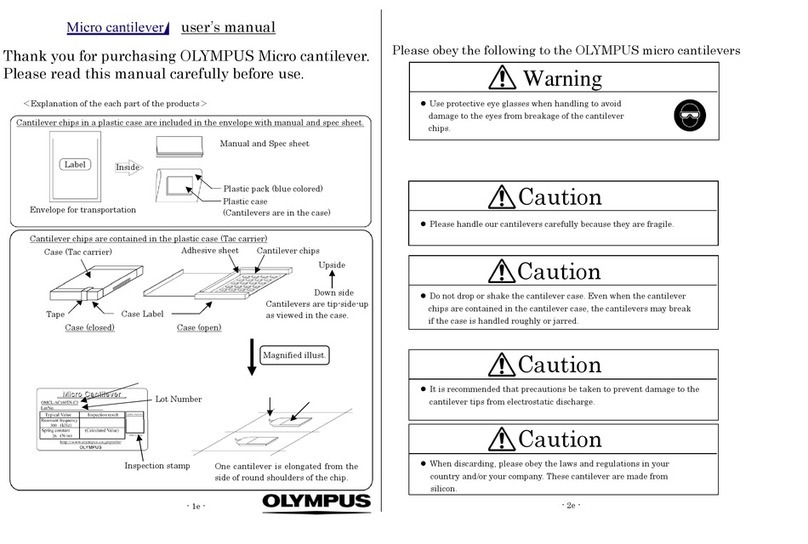
Olympus
Olympus OMCL-AC160TN-C3 user manual
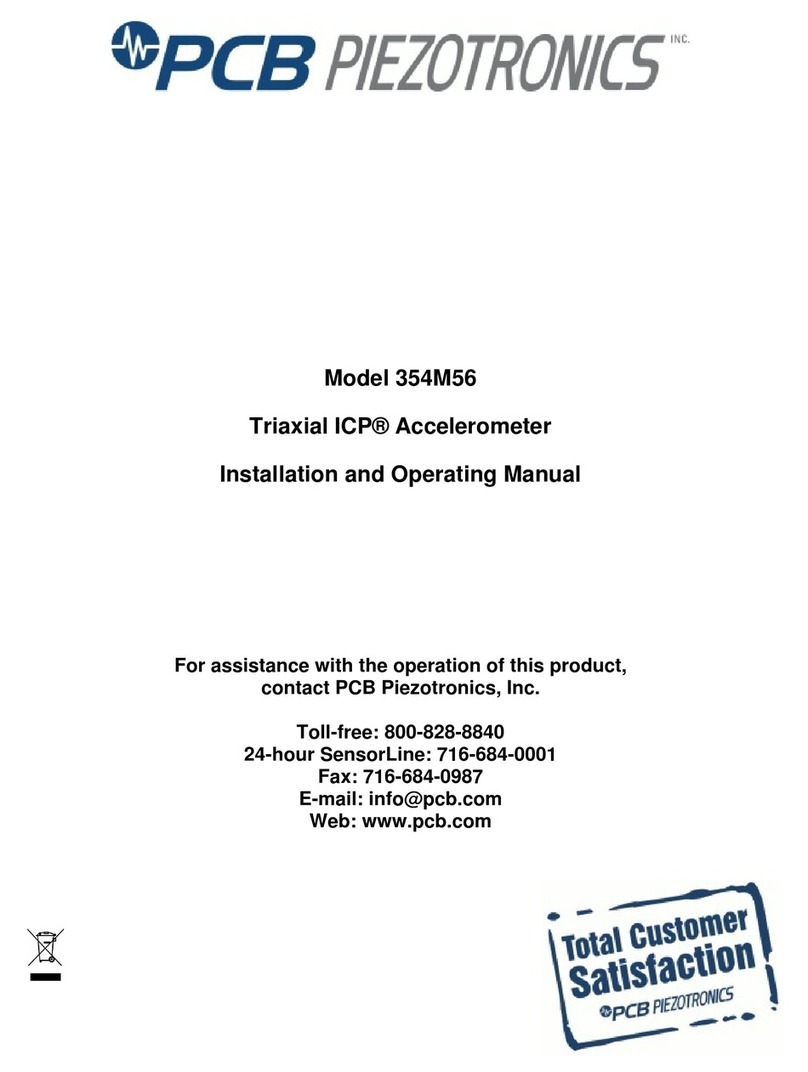
PCB Piezotronics
PCB Piezotronics 354M56 Installation and operating manual
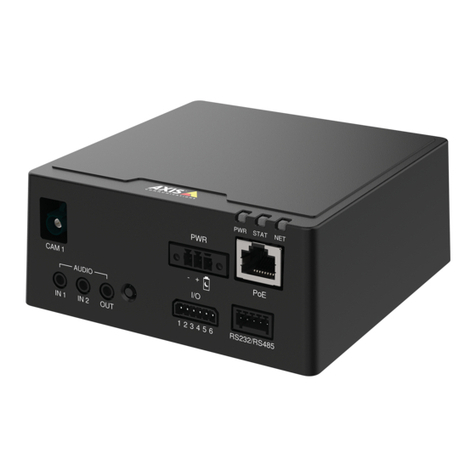
Axis
Axis F9111 installation guide

Dewetron
Dewetron DEWE-31-64 Technical reference manual

ThermoWorks
ThermoWorks ThermaQ operating instructions
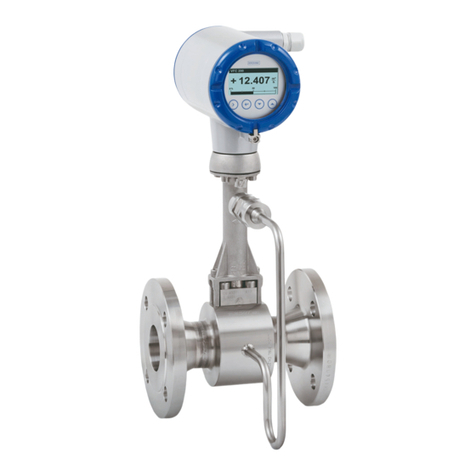
KROHNE
KROHNE OPTISWIRL 4200 Supplementary instructions
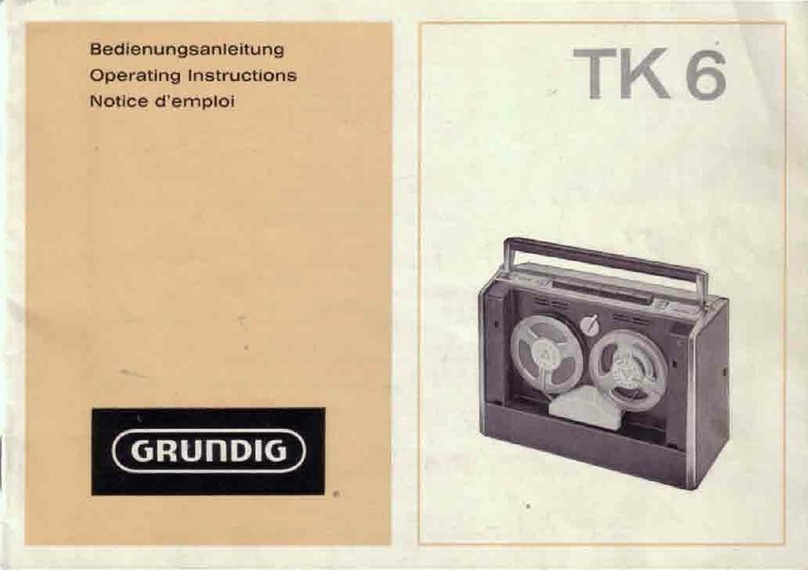
Grundig
Grundig TK 6 operating instructions
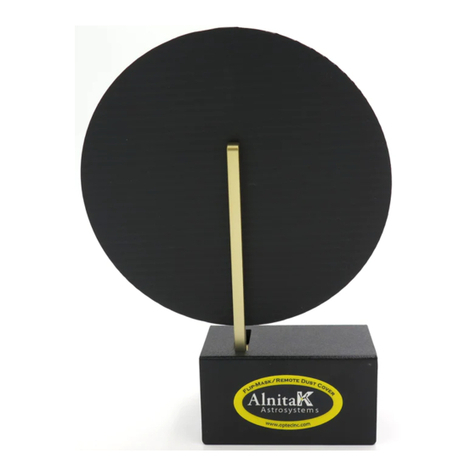
Optec
Optec Alnitak Astrosystems Flat-Man installation manual
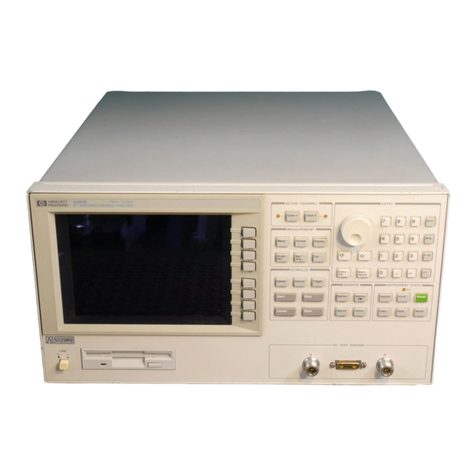
Agilent Technologies
Agilent Technologies 4291B quick start guide

Wavetek
Wavetek CT232A Operator's manual
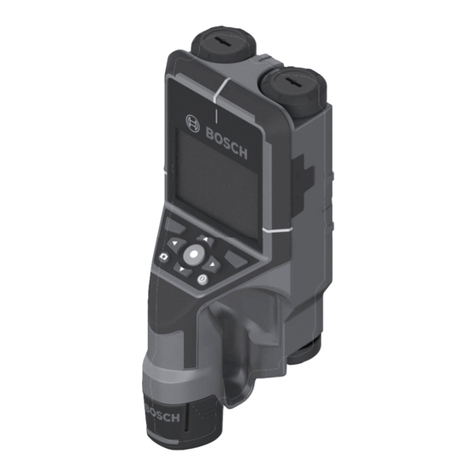
Bosch
Bosch D-tect200C Operating/safety instructions
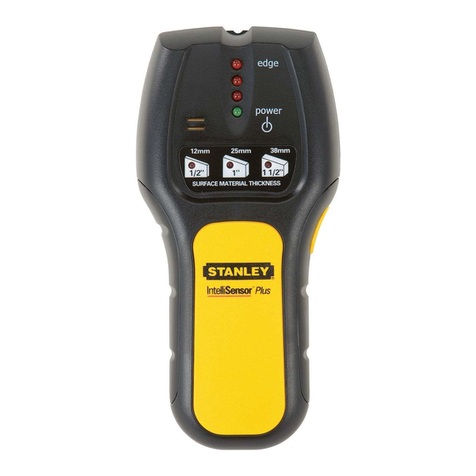
Stanley
Stanley IntelliSensor Plus 77-115 instruction manual


